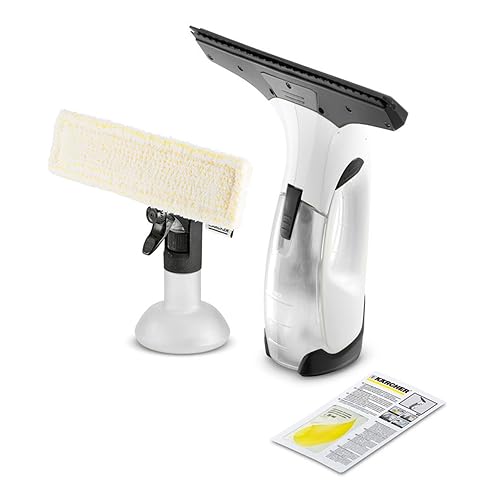How to stop condensation on windows overnight this winter – 10 expert-approved ways to win this annoying cold-weather battle
There are lots of ways to tackle this annoying seasonal problem

Lola Houlton

- 1. Don't close blinds
- 2. Add dish soap
- 3. Apply anti-fog window film
- 4. Track with a hygrometer
- 5. Move big furniture away
- 6. Increase ventilation
- 7. Maintain a stable indoor temperature
- 8. Dehumidify the air
- 9. Improve window insulation
- 10. Use plants that banish condensation
- FAQs
- Which window dressings should you use if you have condensation?
- What indoor appliances could be causing condensation?
- Meet the experts
With the arrival of cooler weather, many of us are starting to deal with a familiar problem: How to stop condensation from forming on windows overnight.
While a little bit of moisture might not seem like a big deal, it can quickly lead to bigger issues, from unsightly mold and mildew, to costly damage to your window frames and sills.
Now is the perfect time to tackle overnight window condensation in bedrooms and other problem areas, head-on. Here, our HVAC experts reveal 10 easy ways to stop condensation from forming on your windows overnight, ensuring your home stays healthy and dry all winter long.
10 ways to stop condensation on windows overnight
Understanding what causes condensation is the first step to preventing it. It forms on windows overnight when warm, humid indoor air comes into contact with the cold surface of your windows. This temperature difference causes the moisture in the air to turn back into a liquid, creating the familiar foggy windows you see.
Condensation inside windows can be bad, as left unchecked, it can lead to more than just a foggy view. The excess moisture can create a perfect environment for mold and mildew to grow and can even cause permanent damage to your window seals and sills.
Here are 10 ways to stop it from occurring, according to our experts.
1. Don't close your blinds all the way
It might sound counterintuitive, but leaving your blinds open might curb the condensation overnight.
Design expertise in your inbox – from inspiring decorating ideas and beautiful celebrity homes to practical gardening advice and shopping round-ups.
Eli Zimmer, CEO, Luxaire HVAC Services, says, 'Airflow and ventilation are a big part of fighting condensation. When your blinds are shut, airflow is significantly restricted, and condensation is more likely to form.
'When blinds are open, however, the opposite is true. Humid air doesn’t get so easily trapped at the window, so that moisture can freely circulate and won’t as easily build up on the window’s surface.'
Eli adds that if you do need to close your blinds, for instance, at nighttime, or when it's dark outside, 'aim to leave at least a few inches uncovered if you can so that there is a way for some of that humid air to escape.'
Placing moisture absorbers, available in a multipack at Amazon, on windowsills can help, too.
Conversely, closing your curtains will help as they have better heat-retaining qualities than blinds and will be able to trap a layer of warm air between the curtain and the window.
2. Add dish soap to windows
Dan Staupe, co-owner of Compass Exteriors says, 'There’s “one weird trick” with dish soap condensation hack that can be a huge relief. All you need to do is put some dish soap on a cloth and smear it on your windows. Buffing it into the glass will stop condensation from appearing on your window.
'There’s a scientific explanation for why this works, and it’s because the soap interferes with the water’s surface tension. The surfactants in soap impact that, because they create a sort of thin film on the surface of the glass, enabling the water to spread across the whole window, instead of forming drops.'
Dan adds that whilst this is effective, it is not an effect that lasts, and the soap will need to be reapplied.
He says, ‘Mix a solution where you include about a teaspoon's worth of dish soap in 1/4 of a gallon of water.
The easiest and most efficient way to apply it is in a spray bottle. Just spray that all over the window and then buff it in with a cloth, use circular motions so you don't leave streaks.
‘It won't last forever, so make sure to reapply every few weeks. You don't need to wait for condensation to start forming again, you can be proactive about it to keep up the effect!’
When one of our contributing editors tried this hack, they said it was a 'game-changer' and reported that it was very effective. Using a dish soap without added dyes or harsh chemicals will help to avoid residue.on your windows. The Palmolive dish soap from Amazon is fragrance-free and made with 100% biodegradable cleaning ingredients.
3. Apply anti-fog window film
For a longer-lasting solution, use anti-fog window film, such as a roll of heat reflective window tint, available at Amazon.
Bert Miskell, owner of BPM Heating, Cooling & Plumbing, explains, 'This can reduce fogging and condensation in homes without extreme levels of indoor humidity.
'The hydrophilic surface spreads out moisture so it doesn't bead or drip. Homeowners can order a roll by window size. It is applied by pressing the film against the window pane and smoothing it flat with a squeegee.'
4. Track with a hygrometer
Acting quickly, and ideally before moisture levels get above 50%, will be a much easier preventative window condensation measure, rather than having to stop the condensation once it has formed.
Robert Weitz, Principal & Founder at RTK Environmental Group, advises, 'Get a hygrometer, which measures moisture in the air. Digital hygrometers use electronic sensors, which react to moisture and turns the reaction into a readable number, indicating the relative humidity (RH) in percentage.
'If you don’t have a hygrometer, you can also use the “ice cube” method, where you place a few ice cubes in a glass of water, wait four minutes, and check for condensation on the outside of the glass.'
By using a hygrometer, homeowners can ensure that indoor humidity levels are maintained between 30-50%, significantly reducing the risk of condensation and mold.
Robert adds, 'The Environmental Protection Agency (EPA) has found that indoor air can be two to five times more polluted than outdoor air. Since most people spend nearly 90% of their time indoors, poor air quality in the home or workplace can directly impact health.
'A hygrometer helps you address this by detecting conditions that might contribute to poor indoor air quality, like excess moisture. With this data, you can take steps such as improving ventilation or using a good dehumidifier to create a safer and healthier environment.'
Hygrometers are available in a four-pack at Walmart and are affordable to pick up.
5. Move big furniture away
Having moisture channels around your furniture in fall and winter, when temperatures drop, is vital to allow for easy air flow and adequate home ventilation.
Jon Gilbertsen, CEO at Chris Heating & Cooling, says, 'Make sure there’s no big furniture near the windows. It doesn't even need to cover the window directly to restrict ventilation.
'Even something standing on the left or right of the window can create a corner and trap humid air. It’s best to have nothing against the wall directly below or beside the window if condensation is a problem.'
6. Increase ventilation
'One of the most effective ways to tackle condensation is by improving airflow,' explains Mohammed Ahmed, founder of The Home Guidance. 'Regularly opening windows during daytime allows moist air to exit, and fresh, dry air to circulate.
'Moreover, rooms that are naturally high in moisture, like bathrooms and kitchens, can benefit from exhaust fans. Ensure that these fans vent to the outdoors and not into areas like attics or crawl spaces.'
If you would prefer not to open your windows frequently and don't have an exhaust fan, using a standing fan to circulate air into a room from elsewhere in your home can also help improve airflow. A window fan can help to circulate air, removing moisture from the air near your windows.
Opt for a reversible fan, so that you can run it in reverse during the winter to help prevent condensation. We recommend this quiet Dreo Tower fan, from Amazon.
Finally, open blinds and curtains during the day. 'This allows air to circulate freely and reduces the chance of moisture settling on the windows,' explains Michael Golubev, CEO of Mold Busters.
7. Maintain a stable indoor temperature
'Keeping your home at a consistent temperature can prevent warm air from meeting cold surfaces, which is a primary cause of condensation,' says Michael Golubev.
To maintain a stable and ideal indoor temperature in colder weather, take measures to keep heat in rooms, shutting doors to keep heat in.
'Using thermal or insulated curtains can help retain indoor heat during winter, reducing the cold air's impact on the window's inner surface,' adds Mohammed Ahmed.
'Additionally, sealing gaps around windows and doors with draft excluders or weather-stripping can further stabilize the indoor environment.' Sealing gaps in windows can prevent moisture-laden air from coming in, preventing condensation.
Depending on your window type and color, you might opt for this weather-stripping for windows from Amazon. We recommend choosing weather stripping that blends with your windows.
These methods can keep your house warm without turning up the heat to reduce condensation.
8. Dehumidify the air
Condensation on windows overnight is mainly due to the high humidity in your home. As a result, one of the most effective solutions to reduce condensation is by managing humidity levels inside your house.
'Areas with consistently high humidity, such as bathrooms and near windows, might require dehumidifiers,' recommends Mohammed Ahmed. 'These devices extract excess moisture from the air. For those looking for a comprehensive solution, whole-home dehumidification systems can be considered.'
Use a dehumidifier to keep humidity at 45-55%.
If you're in the market for a dehumidifier, you can check out our guide for the best dehumidifiers.
For a more affordable, though less effective way to reduce your home's humidity, incorporate moisture-absorbing materials such as silica gel packs or desiccants concealed near windows to minimize excess humidity.
We recommend the reusable desiccant dehumidifier from Walmart. You may also want to invest in a window vacuum product to curb condensation with ease, which will also help to avoid damp, mold, and mildew in your home.
9. Improve window insulation
'A well-insulated home can significantly deter condensation,' explains Mohammed Ahmed. 'Ensuring adequate insulation in areas like the attic and walls can lessen the temperature disparity between the inside and outside.'
'Windows with double or triple glazing serve as an insulating barrier between a room's interior and the external environment, helping to reduce condensation by keeping the inner pane warmer, preventing moisture from settling. This insulation minimizes the risk of condensation forming on the inside pane. Such windows are also energy-efficient and aid in noise reduction.'
For a more permanent solution, consider investing in energy-efficient windows equipped with low-emissivity (Low-E) coatings, recommends Elizabeth Grace, home expert and founder of Dream Home Making.
Elizabeth explains, 'These specialized coatings minimize heat transfer, thereby reducing the likelihood of condensation formation on the window surface.' This eco-home improvement is a great long-term solution for reducing condensation.
Blinds and curtains can also help to insulate your windows. At night, close curtains or blinds to create a protective barrier between the window glass and the warm indoor air, helping to prevent condensation.
10. Use plants that banish condensation
Some houseplants can banish condensation, such as a snake plant, Boston fern, or peace lily, all available for home delivery at Amazon, absorb moisture from the air, and regulate humidity.
Place these plants strategically in problem areas, such as near windows where condensation is prevalent, to help absorb excess moisture from the air.
However, some indoor plants release significant moisture that can increase condensation, so be sure to only choose less water-intensive plants; otherwise, using plants to reduce condensation could be counterproductive.
'Overwatering your plants can also lead to excessive transpiration, which increases indoor humidity,' warns Elizabeth Shields, from Super Cleaning Service Louisville. 'To prevent window condensation, it's important to find the right watering routine for your leafy friends. Research and be attentive to the specific requirements of your indoor plants.'
FAQs
Which window dressings should you use if you have condensation?
If you have condensation, this can damage your window dressings, so choose blinds or curtains that are made from a moisture-resistant material, such as faux wood or vinyl.
Additionally, consider using insulating window treatments such as thermal curtains or blinds, to create a barrier that lessens temperature differentials between in and outside, and limits condensation build-up.
What indoor appliances could be causing condensation?
Since condensation on windows occurs overnight due to differences in temperature and humidity inside and outside, reducing the sources of heat and humidity overnight inside can reduce this issue. For example, ensuring after a shower in the evening you run the bathroom fan and wipe down wet surfaces.
'Another way to reduce humidity in the air at night is to wait to run the dishwasher until the morning hours. Many modern dishwashers have a delayed start setting. You can use that to delay the start until morning when the outside temperatures start to warm up,' advises Brian Benham, owner of Benham Design Concepts. 'Any steam-producing thing you can reduce or do earlier in the day will help reduce condensation at night.'
Meet the experts

Eli iz Director of Operations of Luxaire HVAC Services. For over 32 years, businesses across Long Island have relied on Luxaire HVAC Services, Inc. for expert commercial heating, cooling, and indoor air quality solutions. We specialize in servicing, repairing, and installing HVAC systems tailored to the unique demands of commercial facilities.

Dan has over 10 years of experience owning and operating multiple home-service businesses delivering roofing and remodeling to Twin Cities metro homeowners. Each day he strives to provide value to his customers, vendors, and co-workers.

Family is at the heart of everything BPM Heating & Cooling does. As a locally owned and operated business, they treat every customer like a member of their own family, delivering personalized service and genuine care. Bert Miskell is the owner, a HVAC Master (#75803), and a Master Plumber/Gas Fitter(#86156) with years of experience in the field.

Robert Weitz is an environmental testing expert with 30+ years of knowledge and experience in the industry. He’s also a certified microbial investigator and principal at RTK Environmental Group, a leader in the field of testing and consulting in mold, lead, asbestos, VOCs, water, soil, radon, and indoor air quality. Robert helps homeowners and commercial property owners by assessing their environmental situations, identifying root causes, and explaining the best methods to address the issues. Many top medical centers, hospitals, schools, housing authorities, government institutions, and corporations have trusted Robert Weitz and RTK to provide environmental testing


Mohammad Ahmed is an Interior Designer and Home Expert. He did his bachelor's degree in Interior design at the University of Minnesota in 2013 and since then has worked as an interior designer in various companies, designing functional and beautiful spaces for clients.
In addition to his interior and exterior design skills, Mohammad is also a Home expert with a talent for creating bespoke furniture and other accessories. He has been featured in popular publications such as Forbes, Yahoo, Realtor, Real Homes, Bustle, and Living Etc. for his exceptional design tips.
To combat condensation effectively, it's important to adopt a multifaceted approach. Start by ensuring adequate ventilation, allowing the moist air to escape. Prevent the accumulation of condensation around the windows by maintaining a consistent temperature and incorporating moisture-absorbing materials near the affected areas to minimize excess humidity.
For a daily way to remove condensation from windows without soaking towels or wiping moisture onto your windowsills, you can use a window vac to beat condensation. We've also tried the dish soap window condensation hack and found it can keep moisture from building up on windows for around a week.
If you've spotted condensation on the outside of your windows, if may be a sign your insulation isn't working well for your home anymore if the droplets don't clear as the temperature rises naturally over the course of the day.

Punteha was editor of Real Homes before joining Homes and Gardens. She has written and edited wellbeing, lifestyle, and consumer pieces for the national press for 17 years, working across print and digital newspapers and magazines. She’s a Sunday Times bestselling ghostwriter, former BBC Good Food columnist and founding editor of independent magazine, lacunavoices.com. Punteha loves keeping her home clean, has tested and reviewed the latest robot vacuums and video doorbells, enjoys cooking, DIY, decluttering and spending weekends improving her newly-built home. Punteha is disabled and in chronic pain, so small, paced projects that bring big impact and make her household run smoothly are her focus.
- Lola HoultonNews writer
